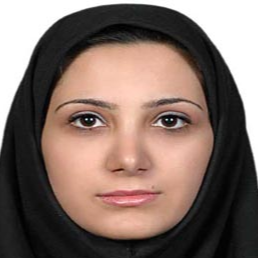International Journal of Information Technology and Computer Science (IJITCS)
IJITCS Vol. 9, No. 7, 8 Jul. 2017
Cover page and Table of Contents: PDF (size: 504KB)
Comparison of Time Concept Modeling for Querying Temporal Information in OWL and RDF
Full Text (PDF, 504KB), PP.26-34
Views: 0 Downloads: 0
Author(s)
Index Terms
Ontology, temporal model, description logic, temporal query language
Abstract
Ontology is an important factor in the integration of heterogeneous semantic information. Description logic, as a formal language for expressing ontologies, does not include the necessary features to create a temporal dimension in the relationships among concepts. It is critical to introduce time concepts to model temporal data and relate them to other non-temporal data recorded in ontology. Current query languages in the semantic web are not able to respond to temporal questions; thus, another important issue is to have the appropriate methods for answering temporal questions. In this paper, temporal modeling methods in OWL and RDF are assessed and the temporal query languages for expressing queries in the semantic web are categorized and compared.
Cite This Paper
Bahareh Bahadorani, Ahmad Zaeri, "Comparison of Time Concept Modeling for Querying Temporal Information in OWL and RDF", International Journal of Information Technology and Computer Science(IJITCS), Vol.9, No.7, pp.26-34, 2017. DOI:10.5815/ijitcs.2017.07.03
Reference
[1]Anagnostopoulos, Eleftherios, Sotiris Batsakis, and Euripides GM Petrakis. "Chronos: A reasoning engine for qualitative temporal information in owl."Procedia Computer Science 22 (2013): 70-77.
[2]Analyti, Anastasia, and Ioannis Pachoulakis. "A Survey on Models and Query Languages for Temporally Annotated RDF." (2008).
[3]Antoniou, Grigoris, and Frank Van Harmelen. A semantic web primer. MIT press, 2004.
[4]Artale, Alessandro, et al. "A temporal description logic for reasoning over conceptual schemas and queries." Logics in Artificial Intelligence. Springer Berlin Heidelberg, 2002. 98-110.
[5]Allen, James F. "Towards a general theory of action and time." Artificial intelligence 23, no. 2 (1984): 123-154.
[6]Batsakis, Sotiris, Grigoris Antoniou, and Ilias Tachmazidis. "Integrated Representation of Temporal Intervals and Durations for the Semantic Web."New Trends in Database and Information Systems II. Springer International Publishing, 2015. 147-158.
[7]Batsakis, Sotiris, and Euripides GM Petrakis. "Representing temporal knowledge in the semantic web: The extended 4d fluents approach."Combinations of Intelligent Methods and Applications. Springer Berlin Heidelberg, 2011. 55-69.
[8]Batsakis, Sotiris, and Euripides GM Petrakis. "SOWL: spatio-temporal representation, reasoning and querying over the semantic web." Proceedings of the 6th International Conference on Semantic Systems. ACM, 2010.
[9]Barbieri, Davide Francesco, Daniele Braga, Stefano Ceri, EMANUELE DELLA VALLE, and Michael Grossniklaus. "C-sparql: a continuous query language for rdf data streams." International Journal of Semantic Computing 4, no. 01 (2010): 3-25.
[10]Buneman, Peter, and Egor Kostylev. "Annotation algebras for RDFS." In The Second International Workshop on the role of Semantic Web in Provenance Management (SWPM-10), CEUR Workshop Proceedings, p. 32. 2010.
[11]Baratis, Evdoxios, et al. "TOQL: Temporal ontology querying language."Advances in Spatial and Temporal Databases. Springer Berlin Heidelberg, 2009. 338-354.
[12]Baader, Franz. The description logic handbook: theory, implementation, and applications. Cambridge university press, 2003.
[13]Berners-Lee, Tim, James Hendler, and Ora Lassila. "The semantic web."Scientific American 284.5 (2001): 28-37.
[14]Bettini, Claudio. "Time-dependent concepts: representation and reasoning using temporal description logics." Data & Knowledge Engineering 22.1 (1997): 1-38.
[15]Böhlen, Michael H., et al. "Querying TSQL2 databases with temporal logic."Advances in Database Technology—EDBT'96. Springer Berlin Heidelberg, 1996. 325-341.
[16]Chamberlin, Don. "XQuery: An XML query language." IBM systems journal41.4 (2002): 597-615.
[17]Davies, John, Rudi Studer, and Paul Warren, eds. Semantic Web technologies: trends and research in ontology-based systems. John Wiley & Sons, 2006.
[18]Embregts, Hanno, Viorel Milea, and Flavius Frasincar. "Metafrastes: A news ontology-based information querying using natural language processing." The 8th International Conference on Knowledge Management in Organizations. Springer Netherlands, 2014.
[19]Ermolayev.V.Batsakis, S.Keberle, N., Tatarintseva.O.,&Antoniou,G. Onologies Of Time: Review And Trends. .(2014)
[20]Fisher, Michael. An Introduction to Practical Formal Methods Using Temporal Logic. John Wiley & Sons, 2011.
[21]Frasincar, Flavius, Viorel Milea, and Uzay Kaymak. tOWL: Integrating time in OWL. Springer Berlin Heidelberg, 2010.
[22]Fisher, Michael David, Dov M. Gabbay, and Lluis Vila, eds. Handbook of temporal reasoning in artificial intelligence. Vol. 1. Elsevier, 2005.
[23]Grandi, Fabio. "T-SPARQL: A TSQL2-like Temporal Query Language for RDF."ADBIS (Local Proceedings). 2010.
[24]Gutierrez, Claudio, Carlos Hurtado, and Alejandro Vaisman. "Introducing time into RDF." Knowledge and Data Engineering, IEEE Transactions on 19.2 (2007): 207-218.
[25]Golbreich, Christine, and Sandrine Mercier. "Construction of the dialysis and transplantation ontology: advantages, limits, and questions about Protege OWL." Workshop on Medical Applications of Protégé, 7th International Protégé Conference, Bethesda. 2004.
[26]Hobbs, Jerry R., and Feng Pan. "Time ontology in OWL." W3C working draft27 (2006): 133. http://www.w3.org/TR/owl-time.
[27]Hobbs, J.R., Pan, F.: An ontology of time for the Semantic Web. ACM Transactions on Asian Language Processing (TALIP): Special issue on Temporal Information Processing 3(1), 66–85 (2004)
[28]Horrocks, Ian, et al. "SWRL: A semantic web rule language combining OWL and RuleML." W3C Member submission 21 (2004): 79.
[29]Hobbs, Jerry R., et al. "A daml ontology of time." online: http://www. cs. rochester. edu/_ferguson/daml/daml-time-20020830. txt (2002).
[30]Krieger, Hans-Ulrich. "A General Methodology for Equipping Ontologies with Time." LREC. 2010.
[31]Kim, Sang-Kyun, et al. "Temporal ontology language for representing and reasoning interval-based temporal knowledge." The Semantic Web. Springer Berlin Heidelberg, 2008. 31-45.
[32]Kim, Jaegwon. Events as property exemplifications. Springer Netherlands, 1976.
[33]Lutz, Carsten, Frank Wolter, and Michael Zakharyaschev. "Temporal Description Logics: A Survey." TIME. 2008.
[34]Mishra, Ravi Bhushan, and Sandeep Kumar. "Semantic web reasoners and languages." Artificial Intelligence Review 35.4 (2011): 339-368.
[35]Maris, Nikos. A reasoner for querying temporal ontologies. Diss. Dept of Sciences, TEI of Crete, 2008.
[36]Noy, Natasha, Alan Rector, P. Hayes, and C. Welty. "Defining N-ary relations on the Semantic Web. W3C working group note." World Wide Web Consortium (W3C) (2006).
[37]O’Connor, Martin J., and Amar K. Das. "A method for representing and querying temporal information in OWL." Biomedical engineering systems and technologies. Springer Berlin Heidelberg, 2011. 97-110.
[38]O'Connor, Martin J., and Amar K. Das. "SQWRL: A Query Language for OWL."OWLED. Vol. 529. 2009.
[39]O'Connor, Martin J., Ravi D. Shankar, Csongor Nyulas, Samson W. Tu, and Amar K. Das. "Developing a Web-Based Application using OWL and SWRL." InAAAI spring symposium: AI meets business rules and process management, pp. 93-98. 2008.
[40]O’Connor, Martin, Samson Tu, Csongor Nyulas, Amar Das, and Mark Musen. "Querying the semantic web with SWRL." In Advances in Rule Interchange and Applications, pp. 155-159. Springer Berlin Heidelberg, 2007.
[41]O'Connor, Martin J., Samson W. Tu, and Mark A. Musen. "The Chronus II temporal database mediator." In Proceedings of the AMIA Symposium, p. 567. American Medical Informatics Association, 2002.
[42]Preventis, Alexandros, Euripides GM Petrakis, and Sotirios Batsakis. "CHRONOS Ed: A tool for handling temporal ontologies in protégé."International Journal on Artificial Intelligence Tools 23, no. 04 (2014): 1460018.
[43]Papadakis, Nikos, Kostas Stravoskoufos, Evdoxios Baratis, Euripides GM Petrakis, and Dimitris Plexousakis. "Proton: A prolog reasoner for temporal ontologies in owl." Expert Systems with Applications 38, no. 12 (2011): 14660-14667.
[44]Pérez, Jorge, Marcelo Arenas, and Claudio Gutierrez. "Semantics and complexity of SPARQL." ACM Transactions on Database Systems (TODS) 34, no. 3 (2009): 16.
[45]Tao, C., Solbrig, H. R., & Chute, C. G. (2011). CNTRO 2.0: a harmonized semantic web ontology for temporal relation inferencing in clinical narratives. AMIA Summits on Translational Science Proceedings, 2011, 64.
[46]Tao, Cui, Wei-Qi Wei, Harold R. Solbrig, Guergana Savova, and Christopher G. Chute. "CNTRO: a semantic web ontology for temporal relation inferencing in clinical narratives." In AMIA Annual Symposium Proceedings, vol. 2010, p. 787. American Medical Informatics Association, 2010.
[47]Tappolet, Jonas, and Abraham Bernstein. "Applied temporal rdf: Efficient temporal querying of rdf data with sparql." In The Semantic Web: Research and Applications, pp. 308-322. Springer Berlin Heidelberg, 2009.
[48]Welty, Chris, Richard Fikes, and Selene Makarios. "A reusable ontology for fluents in OWL." In FOIS, vol. 150, pp. 226-236. 2006.

